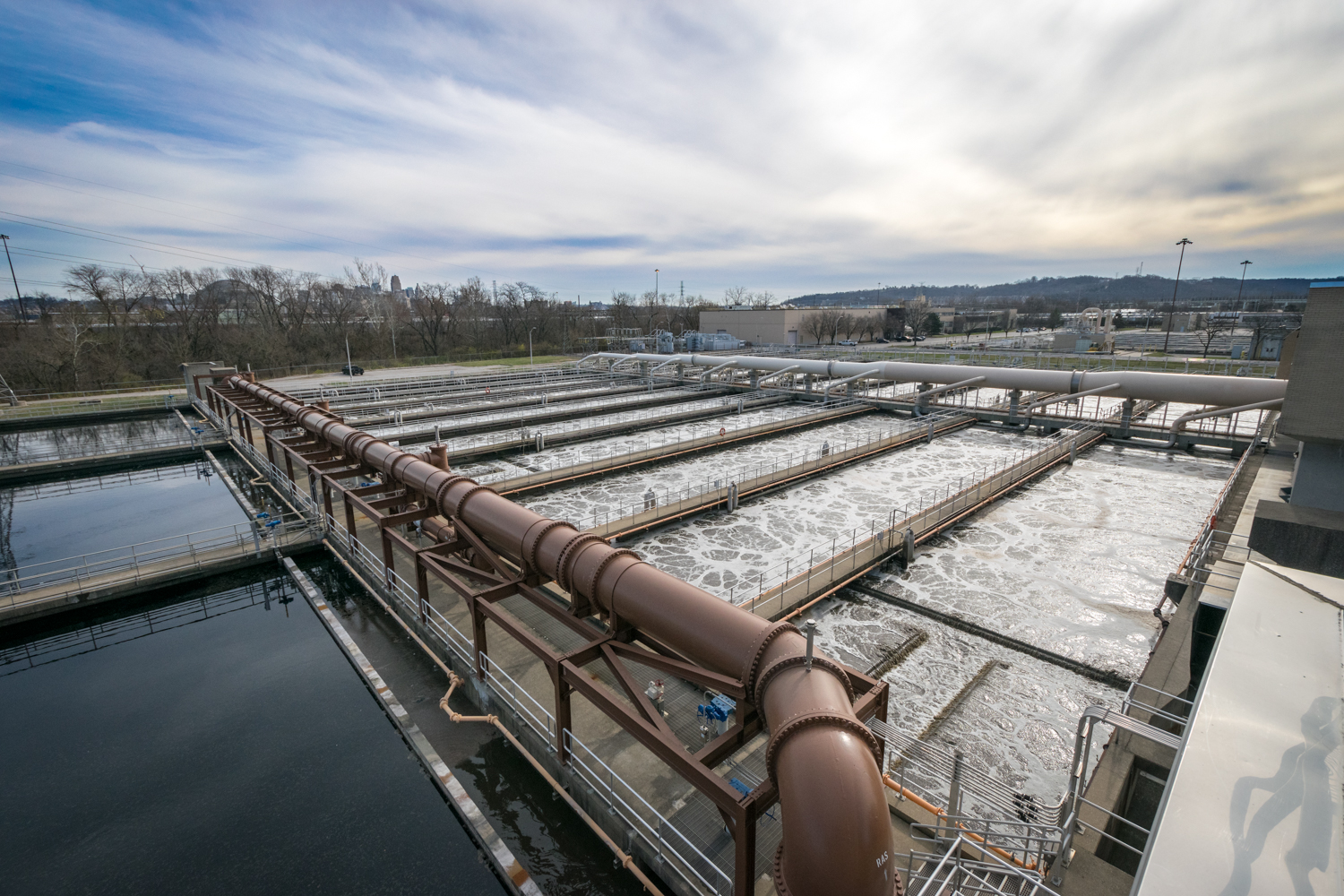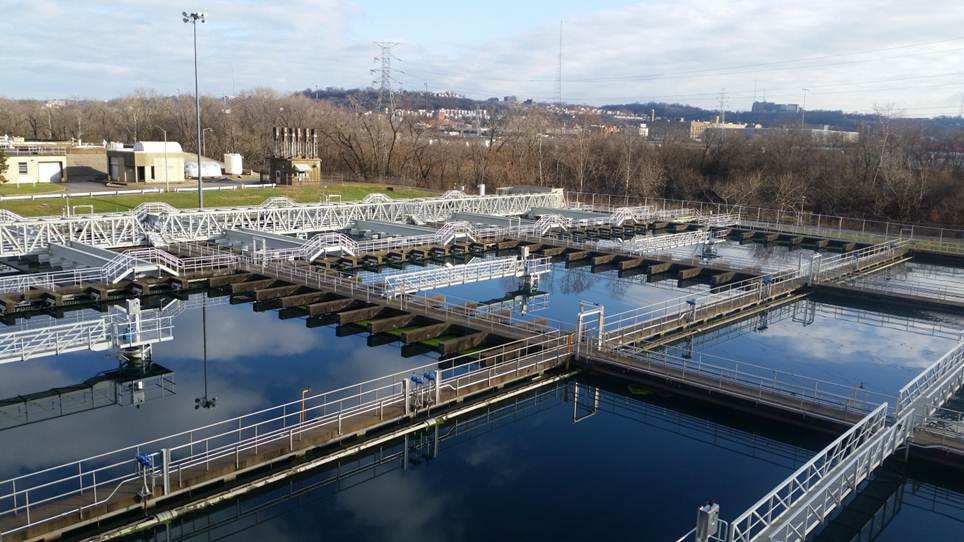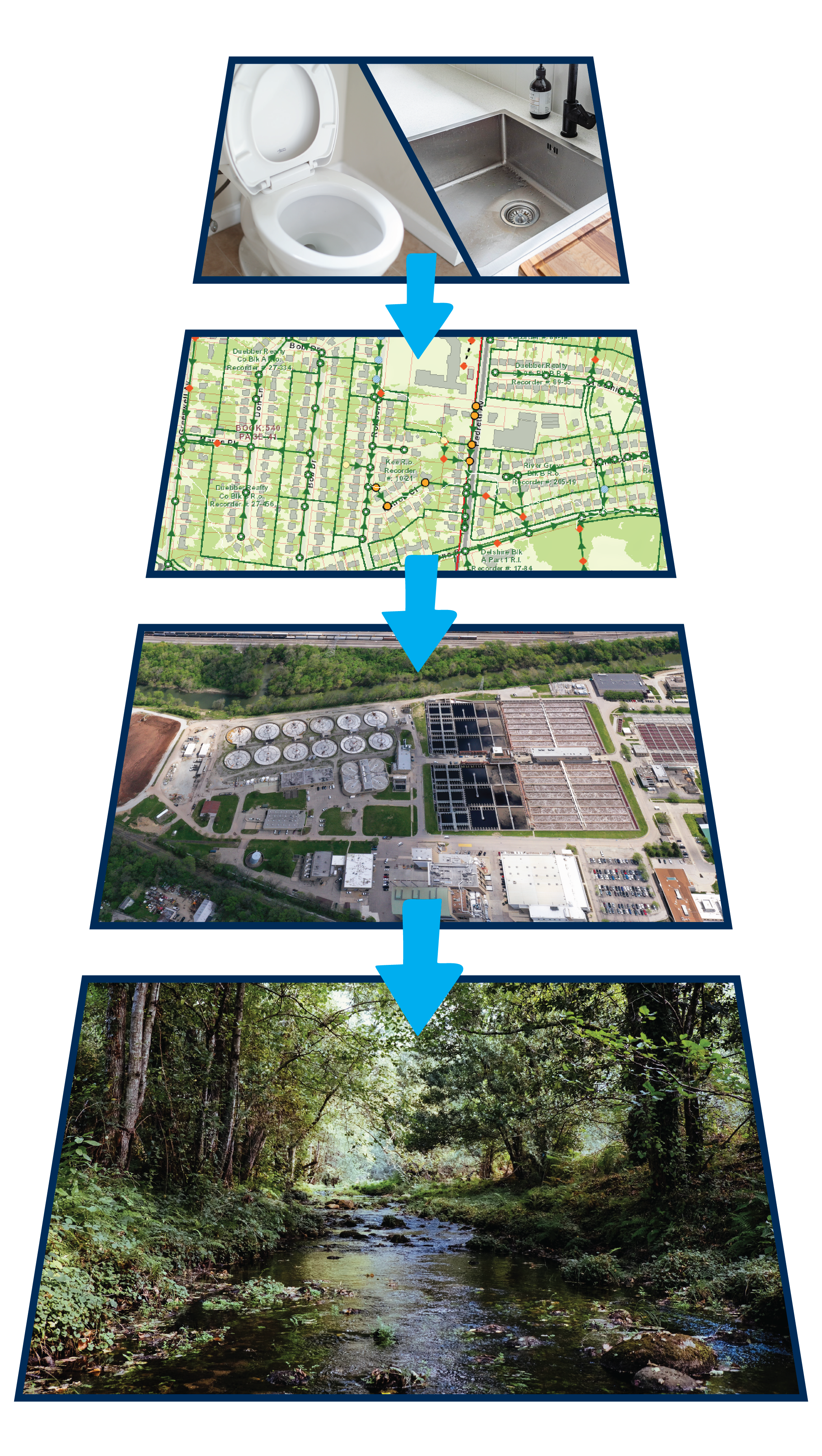What We Do
It's All About Clean Water.
MSD collects and treats wastewater. Wastewater, also known as sewage, is what gets flushed down our toilets or goes down the drain from our sinks, showers, washing machines, and dishwashers. On average, each person produces about 100 gallons of wastewater a day!
Wastewater is carried by the public sewer to a treatment plant where MSD removes trash, organic matter, bacteria, and other pollutants. The cleaned water is then returned to local streams and rivers.
COLLECTION OF WASTEWATER
After wastewater is flushed down the toilet or goes down the drain, it travels through pipes until it reaches the property's building sewer. The building sewer conveys the wastewater to the MSD public sewer. Building sewers are located on private property, except for a portion within the public right-of-way (ROW) that connects to the public sewer.
MSD maintains about 3,000 miles of public sewers. Ultimately, wastewater enters very large sewers, known as interceptor sewers, which take the flow to one of 9 wastewater treatment plants across Hamilton County.
Combined Sewers vs Sanitary Sewers
If you live in the City of Cincinnati or an older suburb, it's likely your wastewater travels through an MSD combined sewer, which were constructed from the mid-1800s through the 1940s. A combined sewer carries both sewage and rainwater in the same pipe. Rainwater enters combined sewers through inlets (catch basins) in the streets and headwalls in forested areas. In addition, most properties in these areas have their gutters/downspouts and foundation drains plumbed into the building sewer.
If you live in a newer suburb, it's likely your wastewater travels through a sanitary sewer that only carries sewage, with rainwater travelling through a separate storm sewer to the nearest waterway. Storm sewers are typically managed by the local municipality or township.
Sewer Overflows
During heavy rainstorms, not all wastewater makes it to a treatment plant. In areas with combined sewers, the sewers can fill up with too much rainwater during storms and overflow into the nearest waterway. Wastewater can also back up into buildings.
MSD is working to reduce or eliminate these overflows through a federally mandated wet weather program. Solutions range from larger sewers and high-rate treatment facilities to sewer separation and green infrastructure. MSD offers a Sewer Backup (SBU) program to assist customers who have experienced a sewer backup from the public sewer. MSD also operates a smart sewer system which helps reduce sewer overflows by storing flows inside large interceptor sewers or diverting wastewater to a storage tank within the collection system.



TREATMENT OF WASTEWATER
MSD treats about 200 million gallons per day (MGD) of wastewater. That's about 73 billion gallons per year! Untreated wastewater entering a wastewater treatment plant is called influent. Treated wastewater leaving the plant and discharged into a receiving stream or river is called effluent.
Here's a quick look at the main processes used in wastewater treatment:
Preliminary Treatment
The purpose of preliminary treatment is to remove debris and trash from the wastewater that might clog pipes or damage equipment.
- The Bar Screens remove large objects such as branches, rocks, bottles and other trash and debris (known as screenings) from the wastewater.
- The Pump Station pumps the wastewater to a higher elevation so it can flow by gravity (downhill) through the plant.
- The Grit Vortex Chamber removes gravel, sand, small stones, cinders, and other small debris from the wastewater.
Primary Treatment
The purpose of primary treatment is to remove floatables and reduce solids in the wastewater.
- The Primary Settling Tanks remove solids that sink to the bottom, as well as oils and grease (known as skimmings) that float on top of the wastewater. About 60% of the solids are removed by these tanks.
Secondary Treatment
Secondary treatment is a biological process that removes the remaining solids in the wastewater.
- The Secondary Aeration tanks use microorganisms (“bugs”) to consume solid organic materials in the water. Air is blown into the tanks to keep the bugs alive.
- The Secondary Clarifiers allow the bugs (which are heavy after they've consumed the solids) to sink to the bottom. Some of the bugs are returned to the secondary aeration tanks, while others are disposed of as solids.
Disinfection
Disinfection kills pathogens in the water before it is discharged back into a local stream or river. Disinfectants used by MSD include high strength bleach (hypochlorite) and ultra-violet radiation.
Solids Handling
Solids from the wastewater treatment process are collected, thickened, dewatered, and then disposed of. Disposal methods used by MSD include incineration and landfilling. However, an anaerobic digestion facility is under design for the Little Miami Wastewater Treatment Plant.
